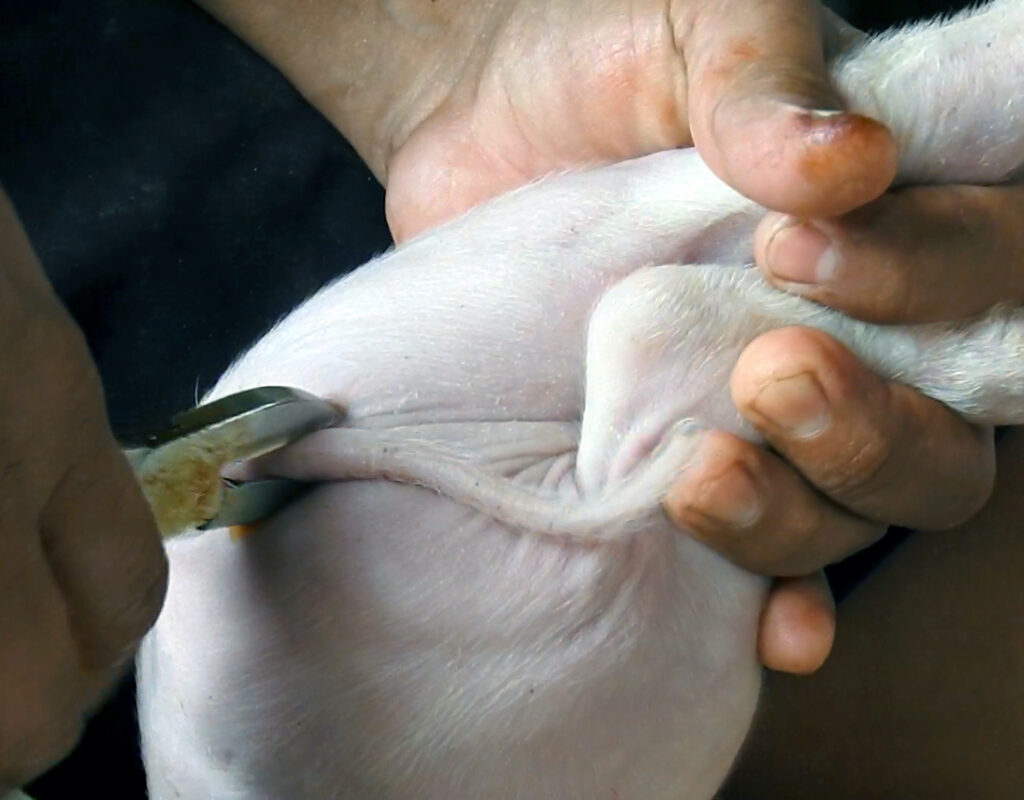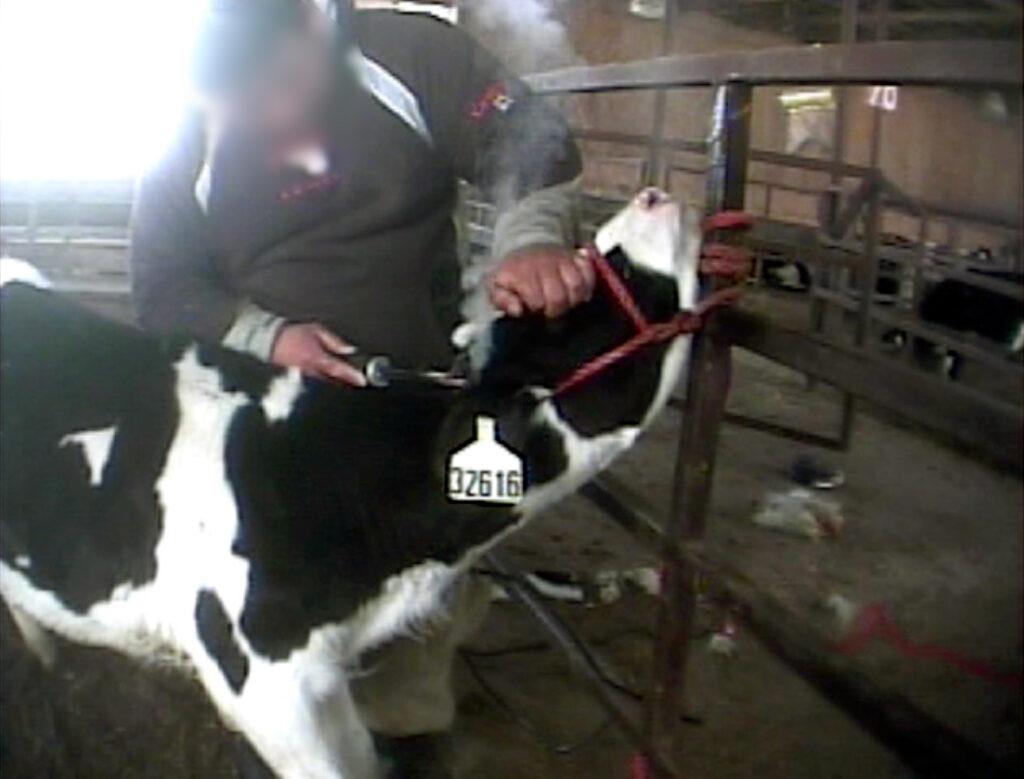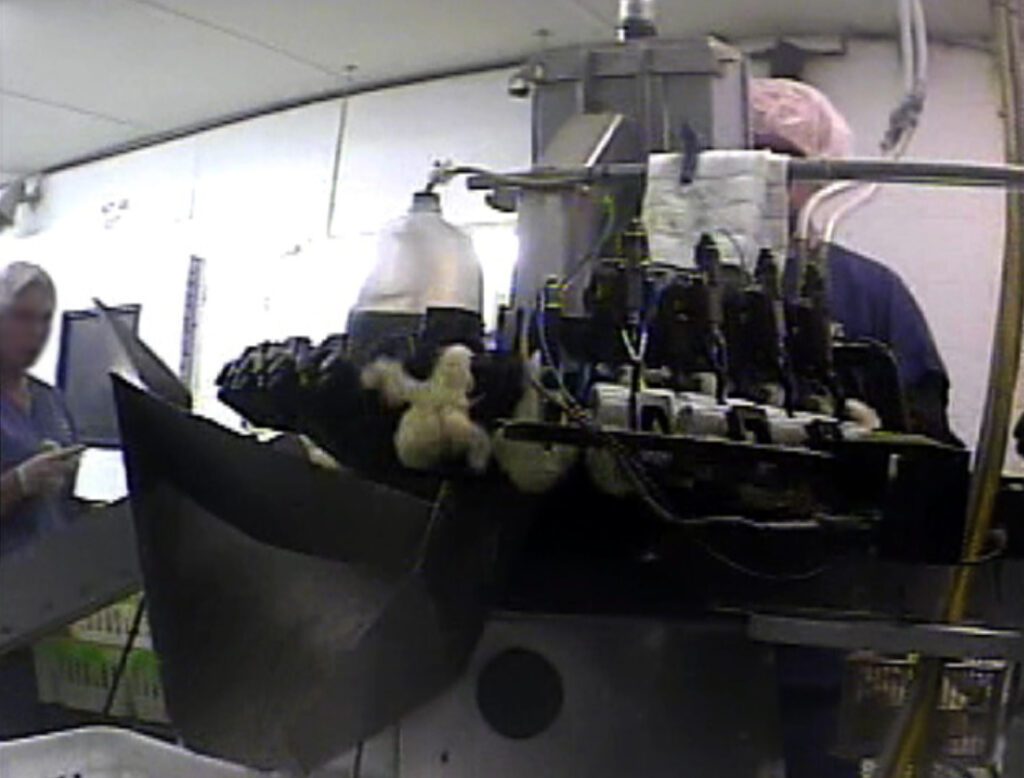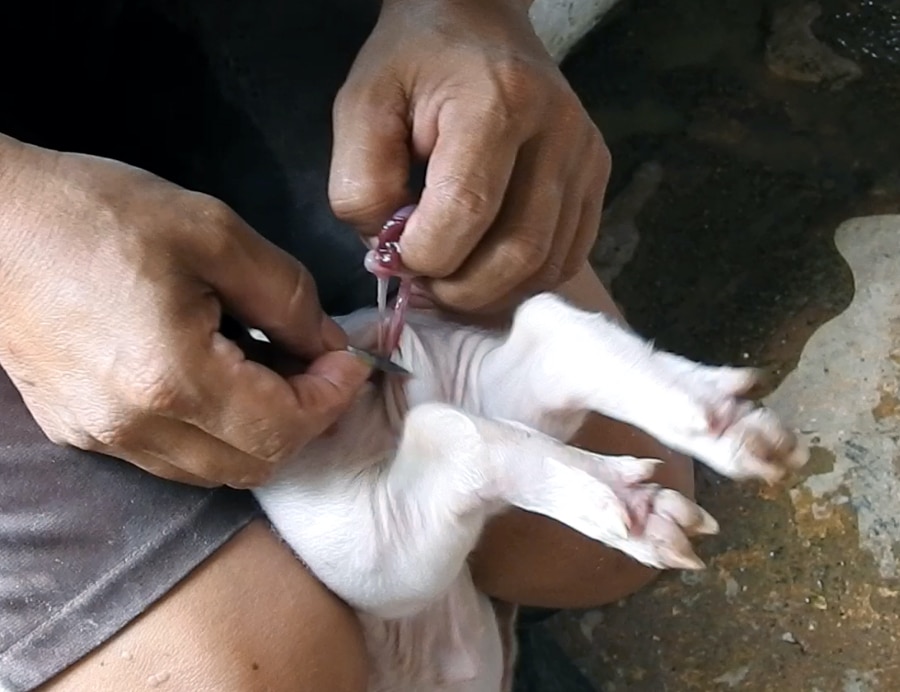Did you know animals are mutilated at factory farms? It’s true. Mutilations, usually performed without anesthesia or pain relief, are completely legal and considered standard procedure.
Here are some of the most common mutilations:
Ear Notching
Farmers often cut notches into pigs’ ears for identification. The location and pattern of the notches are based on the National Ear Notching System developed by the United States Department of Agriculture. These notches are typically cut when pigs are just babies. A University of Nebraska–Lincoln Extension publication states:
If pigs are notched at 1–3 days of age, the task is much easier. If you allow pigs to become large (100 lb.), the task is considerably more demanding mentally and physically.
Other identification methods, such as ear tagging, are also sometimes used.
Tail Docking
A common practice at dairy farms, tail docking involves cutting through the sensitive skin, nerves, and bones of calves’ tails. The industry claims that removing the tails makes milking more comfortable for workers and improves cows’ udder health and hygiene—despite the multiple scientific studies that found no evidence to suggest that tail docking benefits hygiene and cleanliness.


For pigs, tail docking involves removing a piglet’s tail or a portion of it with a sharp instrument or rubber ring. Farmers “dock” piglets’ tails to prevent tail biting, an abnormal behavior that can occur when pigs are housed in crowded or stressful conditions—such as factory farms. Tail docking is generally performed when piglets are so young that they are still nursing.
Dehorning and Disbudding
Disbudding is the removal of a calf’s horn buds and can occur anywhere from birth to just eight weeks of age. After eight weeks, the horns attach to the skull, and disbudding will not work. Disbudding methods include applying chemicals or a hot iron to destroy horn-producing cells in the horn bud. Both of these methods are extremely painful. A study cited in the Journal of Dairy Science explains:
Most farmers (70%) stated that they had not received any specific training on how to perform disbudding. Fifty-two percent of the respondents reported that disbudding causes prolonged postoperative pain but pain management was rare. Only 10% of the farmers used local anesthesia before cauterization, and 5% of the farmers provided calves with postoperative analgesia.
Dehorning involves cutting out a calf’s horns and horn-producing tissue once the horns have formed—a severely painful and stressful procedure. Methods include cutting out the horns with a knife, burning them out with a hot iron, and pulling them out with “scoop dehorners.” Workers sometimes use guillotine dehorners, surgical wire, or horn saws on older calves or cows with larger horns.


Both disbudding and dehorning are common at dairy and beef farms. According to The Beef Site, dehorning and disbudding are used in part to “prevent financial losses from trimming damaged carcasses caused by horned feedlot cattle during transport to slaughter” and to “require less space at the feed bunk and in transit.”
Debeaking
Debeaking is a common procedure performed on hens in the egg industry and turkeys raised for meat. When the birds are between five and 10 days old, the sharp upper and lower tips of their beaks are painfully removed. The standard method is burning them off with a hot blade, although they can also be cut with a scissor-like tool or destroyed by infrared light.


The tip of a hen’s or turkey’s beak contains sensory receptors that, when cut or burned, can cause pain and reduce a bird’s ability to engage in natural behaviors, like eating, preening, and pecking.
Debeaking is done to reduce cannibalism, aggressive behaviors, and feather pecking—all stemming from the unnatural extreme confinement farmed animals endure.
Castration
Castration involves removing male animals’ testicles. Farmers castrate pigs to prevent “boar taint,” a foul odor and taste that can develop in the meat of uncastrated males as they mature. Some farmers use sharp instruments, while others use a rubber band around the testicles to cut off blood flow until they fall off. These methods can complicate an animal’s development and cause infection and stress. Undercover investigations have even revealed workers cutting into male piglets and using their fingers to rip out the testicles.


One reason the meat industry castrates calves is to prevent tougher, less-flavorful meat. Commonly practiced in the industry, calves’ testicles are cut off, crushed, or tied with a rubber band until they fall off.
Teeth Clipping
Because pigs in the meat industry are housed in unnatural, cramped, and stressful environments, they sometimes bite workers and other pigs or gnaw on cages and other equipment out of frustration and boredom. To prevent injuries or damage to equipment, workers grind down or clip piglets’ sharp teeth with pliers or other instruments shortly after the animals are born.


Aside from the pain, teeth clipping has been shown to cause gum and tongue injuries, inflamed or abscessed teeth, and higher risk of infections.
Take Action
These are just a few of the common mutilations inflicted on farmed animals—typically when they are just babies. Join us in fighting for animals mutilated in our food system. Sign up to learn more!
